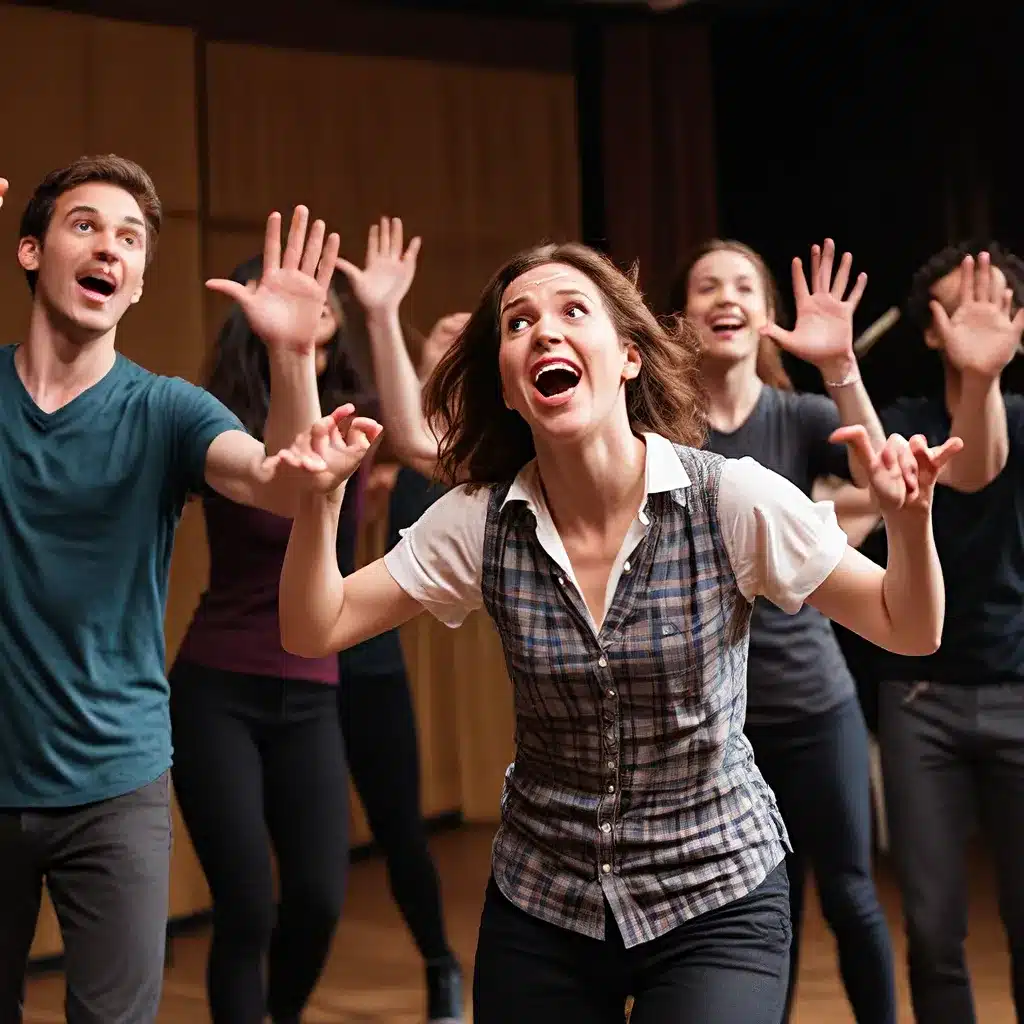
The Lost Art of Spontaneity in Musical Theater
As a lifelong theater enthusiast, I’ve always been fascinated by the intricacies of musical performance. From the meticulously crafted scores to the precision of choreography, there’s an undeniable artistry to the world of musical theater. But in recent years, I’ve noticed a troubling trend – a growing emphasis on perfection that threatens to stifle the very essence of what makes live performance so captivating.
It’s a phenomenon I like to call “artism” – an ideology that glorifies the musician as a solitary creative genius, with music as the uncompromised expression of their vision. In the realm of musical theater, this mindset has led to a culture of rigidity, where spontaneity and improvisation are often frowned upon, and the performers are expected to be mere vessels for the composer’s brilliance.
But here’s the thing – some of the most iconic moments in musical theater history have been the result of spontaneous, in-the-moment magic. Think of the legendary Ethel Merman, whose booming voice and larger-than-life stage presence could captivate audiences without a single written note. Or the brilliant improvisations of Liza Minnelli, who could turn a familiar show tune into a completely unique experience.
Rediscovering the Joy of Improv
As a performer myself, I’ve experienced the transformative power of improv firsthand. When you’re able to let go of the constraints of the script and embrace the thrill of the unknown, there’s a palpable energy that radiates from the stage. The audience can feel it too, and it’s what sets truly great performances apart from the merely competent.
But in the world of musical theater, this spontaneous spirit has often been stifled in favor of a more rigid, “artsy” approach. Audiences are expected to sit in respectful silence, their heads nodding in appreciation of the “genius” on display. God forbid anyone should dare to tap their foot or hum along to the music!
It’s a shame, really, because musical theater has always been a genre that thrives on audience interaction and emotional engagement. The Musical Theater Center is on a mission to change that, by championing the art of improvisation and encouraging performers to embrace their inner Ethel Merman.
Embracing the Unexpected
One of the key aspects of improv artistry is the ability to embrace the unexpected. In a world where every note and movement is choreographed to perfection, there’s a certain thrill in the unknown – the moments where a performer might deviate from the script and venture into uncharted territory.
Take, for example, the classic musical “West Side Story.” While the original score is a masterpiece of precision and complexity, the most memorable moments often come when the performers inject their own personality and flair into the material. A well-timed wink, a playful gesture, or a spontaneous ad-lib can transform a familiar song into something truly electric.
And it’s not just the performers who benefit from this approach. Audiences, too, are drawn to the sense of unpredictability and excitement that comes with improv-infused musical theater. They’re no longer just passive observers, but active participants in the creative process, responding to the energy and spontaneity on stage.
The Power of Improvisation
Of course, improv artistry in musical theater is not just about throwing caution to the wind and letting chaos reign. It’s a highly skilled discipline that requires a deep understanding of the material, as well as a keen sense of timing and collaboration.
Successful improvisation in musical theater often involves a delicate balance of preparation and spontaneity. Performers must have a firm grasp of the score, the choreography, and the overall arc of the story. But within that framework, they’re encouraged to explore, to experiment, and to take risks – always with the goal of heightening the emotional impact and engaging the audience on a deeper level.
It’s a philosophy that flies in the face of the “artism” mindset that has so often dominated the world of musical theater. Instead of treating the performers as mere vessels for the composer’s vision, it empowers them to become true co-creators, shaping the experience in real-time and infusing it with their own unique flair.
Unleashing Your Inner Improv Artistry
So, how can you, as a musical theater performer, tap into the power of improv artistry? Here are a few tips to get you started:
-
Embrace Spontaneity: Don’t be afraid to deviate from the script or the choreography, especially in moments where you feel a natural impulse to try something new. Trust your instincts and be willing to take risks.
-
Cultivate Collaboration: Improv artistry is all about teamwork. Work closely with your fellow performers to develop a shared sense of trust and communication, so that you can respond to each other’s spontaneous moments with ease.
-
Harness Your Emotions: The best improv moments often come from a place of deep emotional connection. Tap into the feelings of your character and let them guide your performance, rather than relying solely on technical precision.
-
Practice, Practice, Practice: Improvisation may seem spontaneous, but it’s actually the result of countless hours of preparation and honing your craft. Dedicate time to developing your vocal, acting, and movement skills, so that you can draw on them when the moment calls for something unexpected.
At the end of the day, improv artistry is about rediscovering the joy and energy that first drew you to musical theater. It’s about embracing the unpredictable, the messy, and the utterly captivating – and using those elements to create performances that will live on in the hearts and minds of your audience.
So, what are you waiting for? Unleash your inner Ethel Merman, and let the spontaneous magic begin!

